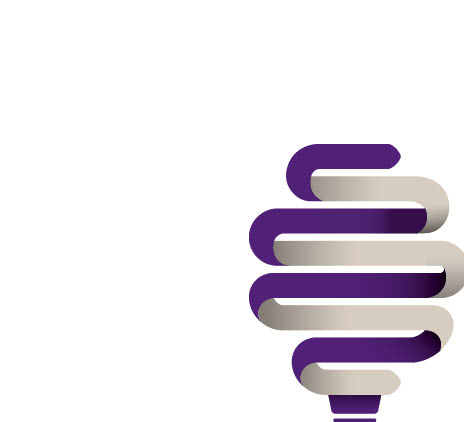-
Transactional advisory services
Find out more about the transactional advisory services of Grant Thornton Financial Advisory Services
-
Valuations
Find out more about the valuations services of Grant Thornton Financial Advisory Services
-
Mergers and acquisitions
Find out more about the merger and acquisition services of Grant Thornton Financial Advisory Services
-
Forensic and investigation services
Find out more about the forensic and investigation services of Grant Thornton Financial Advisory Services
-
Recovery & reorganisation
Find out more about the Recovery & reorganisation services of Grant Thornton Financial Advisory Services
-
Business risk services
Find out more about the business risk services of Grant Thornton Financial Advisory Services
-
Business consulting
Find out more about the business consulting services of Grant Thornton Financial Advisory Services
-
Capital market
Capital market
-
Corporate and business tax
Find out more about our corporate and business tax services.
-
Direct international tax
Find out more about our direct international tax services.
-
Global mobility services
Find out more about our global mobility services.
-
Indirect international tax
Find out more about our indirect international tax services.
-
Transfer pricing
Find out more about our transfer pricing services.
-
Litigation
Our lawyers and accountants can manage all defense measures provided not only by the Italian law, but also by EU regulations and conventions
-
Family business
Find out more about our Family business services.
-
Legal
The client can be assisted in every need and with the same care both on important operations or disputes and on simple matters

-
Back office outsourcing
Find out more about our Back office outsourcing services
-
Business process outsourcing
Find out more about our business process outsourcing services.
-
Compilation of financial statements
Find out more about our compilation of financial statements services.
-
Tax compliance
Find out more about our tax compliance services.
-
Electronic invoicing
Find out more about our electronic invoicing services
-
Electronic storage
Electronic storage is an archiving procedure that guarantees the legal validity of a digitally stored electronic document
-
Revaluation of corporate assets
Find out your civil and fiscal revaluation of tangible, intangible and financial assets
-
Payroll
Complete and customized payroll service, integrated with digital solutions and compliant with Italian and international regulations.
-
Labor consultancy
We help Italian and international companies manage all aspects of their workforce.
-
HR & Payroll Advisory Services
We review contracts, payroll, and risks for extraordinary transactions and we assess tax, labor, and safety risks in outsourcing contracts.
-
Extended services
We provide integrated digital tools to simplify HR management.
-
HR Infinity Portal
The HR Infinity Portal is Zucchetti’s platform designed to centralize communication between the company and its employees.
-
Cybersecurity
GT Digital helps clients structure information security management internal functions, also through partially or totally outsourced functions
-
Agile and Programme Management
GT Digital provides support in the adoption and implementation of different portfolio management
-
Robotic Process Automation
Our “BOT Farm” can rely on digital workers able to help clients in routine activities, allowing employees to deal with more added-value activities
-
Data strategy and management
GT Digital can support clients in seizing the opportunities offered by Big Data, from the definition of strategies to the implementation of systems
-
Enterprise Resource Planning
We support clients in selecting the most appropriate ERP System according to their specific needs, helping them also understand licensing models
-
IT strategy
GT Digital supports clients in making strategic choices, identifying innovation opportunities, comparing themselves with competitors
-
IT service management
We can support with software selection and with the implementation of dedicated tools for the management of ICT processes
-
DORA and NIS 2
The entry into force of the DORA Regulation and NIS2 represents a major step towards the creation of a harmonised regulatory framework

The business crisis and insolvency code (Legislative Decree no. 14/2019) entered into force on 15 July 2022, replacing insolvency law of 1942, following a long regulatory process and many delays due to the pandemic, as well as the need to adapt the instrument originally provided by the code to European Directive (EU) no. 1023/2019 on debt restructuring and insolvency. This is a crucial reform for the safeguard of companies’ value and of creditors, and for the economic system as a whole.
In this context, the tax settlement plays an important role, manly in the current historical moment, and it is even more important due to the economic difficulties of businesses, which determined an increase in the applications for insolvency procedures to settle the relevant debts. Therefore, application problems related to the tax settlement are of topical interest.
To this regard, critical modifications were recently introduced to the bankruptcy law (in 2017), in order to implement the judgment of the EU Court of Justice and replace the previous rule providing for the impossibility to settle VAT and WHT at a reduced amount or through a deferred payment.
Based on the principles of the reform, the possibility to reduce the debt to be settled to the Revenue office is part of the more general possibility to reduce the debt to be settled to any priority creditor, provided that they are not subject to worse conditions than those under the liquidation alternative.
Therefore, there is a realignment between the companies’ and their creditors’ interests, rather than a prevalence of the latter, which can be, on the contrary, evident in a bankruptcy context, where there are no further business or labour interests to safeguard. Therefore, such realignment of interests also applies to tax and social security creditors, which no more benefit from an automatically favourable treatment compared to the liquidation option.
However, in order to prevent the risk of abusing of such procedure and pending the entry into force of the relevant supplemental or amendment legislative decree, Law Decree no. 69 dated 13 June 2023, during its conversion into Law no. 103 dated 10 August 2023, has recently introduced important updates with reference to the settlement of tax and social security debts within debt restructuring agreements, regulated under art. 63 of Legislative Decree no. 14/2019 (Business crisis and insolvency code).
The previous version of the regulation provided, even lacking acceptance by the tax authorities or social security institutions, for the possibility to proceed with a “forced” validation of debt restructuring agreements by the competent Court; this process is defined as tax cram down.
The new provision (introduced by art. 1-bis of the law decree) is however stricter than the previous one and provides that the Court can validate debt restructuring agreements, even lacking an acceptance by the tax authorities or social security institutions, as long as the following conditions are met:
Agreements cannot be aimed at the company’s liquidation;
Acceptance by the tax authorities is determining to reach the percentages established under art. 57, para 1 (60%), and art. 60, para. 1 (30%), of the business crisis and insolvency code;
The total credit due to other creditors joining the restructuring agreements must be equal to at least 25% of the total credit amount;
The settlement proposal to the tax authorities and other mentioned institutions must be advantageous compared to the liquidation alternative, which must be specifically evaluated by the Court before validating the agreement;
The settlement of debts due to the tax authorities and social security or welfare institutions must be equal to at least 30% of the amount of the relevant debts, including interest and penalties.
Should the total debt due to other creditors be lower than 25% of their total amount, save for the other conditions required, the minimum percentage to settle debts due to the tax authorities and social security and welfare institutions increases to 40%. Moreover, payment cannot be deferred for a period longer than ten years, including payment of legal interest related to the requested deferment.
The above specified modifications impact exclusively debt restructuring agreements and not tax settlement procedures defined within arrangement with creditors procedures.
The modification of the tax settlement procedure was also decided following recent validations by the Court of debt restructuring agreements through the tax Cram down process, which provided for the write-off of the value of debts due to the tax authorities and social security and welfare institutions even exceeding 90%.
Therefore, in order to avoid a distorted use of the tax Cram down (though consistent with the current law provisions), the Government introduced, during the conversion into law of Law Decree no. 69/2023, the updates specified above and, in particular, the minimum settlement limit of debts due to the tax authorities, equal to 30% or 40% depending on the specific cases.
The new conditions for the application of the tax settlement procedure, as established by the Government, will make it difficult to use it within debt restructuring agreements and, therefore, a sagging review of the minimum settlement percentages would be desirable, in order to favour a higher use of this procedure and, however, avoid the presentation of “illicit” proposals to reach an alignment between the companies’ and the creditors’ interest.

